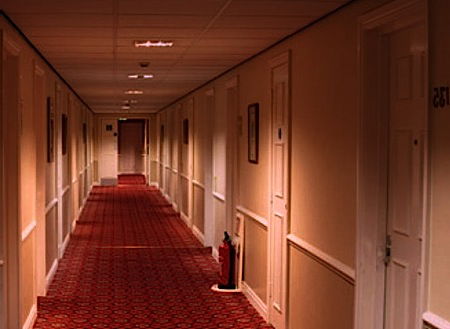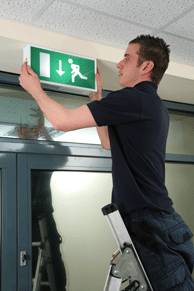Published: 15 December 2014
Category: Q&A
Michael asks this question, which concerns emergency lighting and whether, under test, the normal lights should go out, or not. It has been answered by both the Lighting Industry Association (LIA) and Lux Magazine (Theme – Lighting):

This Q & A is one of thousands posted in our Technical Expertise area, and answered on a daily basis by our Voltimum Experts.
Question: An electrical contractor undertook an emergency lighting test on a site that has just passed its 12 months defect period. When tested, all the normal lights went out and the emergency fittings came on.
It was stated that this is not correct under BS 5526-1-2011 8.3.3 test facility. Each emergency lighting system should have a suitable means for simulating failure of the normal supply for test purposes (i.e. without interruption of the normal supply).
Yet, BS 5526-1-1999 recommended that all of the lights should go out under the test procedure.
The electrical contractor has suggested that the installation be changed to comply with BS 5526-1-2011, so the original contractor was contacted and asked to change the wiring so that the lights would stay on while under the testing procedures.
The original electrical contractor responded and stated that their installation fully complies with British Standards, and NICEIC recommendations.
They state that the interruption of the normal supply, in effect, relates to operation / tampering with the main supply; it does not mean that lighting will stay, and all of the above can be verified by NICEIC technical support.
Can anyone please confirm which of these views is correct?
LIA Answer: The enquirer does not correctly state the text of the 1999 edition of BS 5266-1, sub-clause 8.3.3 which actually states: ‘Each emergency lighting system should have suitable means for simulating failure of the normal supply for test purposes’.
Therefore, it is only the emergency lighting system that we are concerned with and, therefore, it is only necessary to turn off the permanent supply to the emergency luminaires either centrally or by the use of a test switch. The normal mains lighting installation should not be affected during the simulation of a mains failure.
There has been no change to the requirement in the 2011 edition, other than the addition of text to make it clearer that there should be no interruption of the mains supply.
Lux magazine answer: I had to consult with my friend and expert David Wright of ELP who is very knowledgeable on this area and sits on some of the technical committees. His view is that we try to consider the ‘intent’ of the standard.
'It is of course technically essential to ‘interrupt the normal (un-switched) mains supply’ to create a test - whether this is done locally by a test switch or self-test device within the luminaire or back in the plant room by a keyswitch.'
The intent of the standard, believes David, was to ensure that no additional risk was created by conducting a test - e.g. plunging an escape route into total darkness.
'Therefore, it is better that only the supply to the emergency luminaires is interrupted during a test. I cannot think of any installation method that would not have an un-switched mains supply feeding the emergency lighting luminaires that is completely separate from the normal switched supply feeding the general lighting’.
David believes the standard still allows the most basic form of initiating a test to be interrupting the mains supply (ideally via an appropriate keyswitch or the like).
'I personally believe that the note in parenthesis in BS 5266-1:2011 Clause 8.3.3 refers to the normal lighting supply, but it is misleading, and I will personally take this up with the appropriate BSI representatives,' says David.
To see many more Q & A in Voltimum UK's Experts Area, please click on the link. Experts from leading organisations provide online answers to your technical questions on a broad range of subjects. Our searchable database of existing Q & As now contains over 3,500 entries; you can browse through them here.

